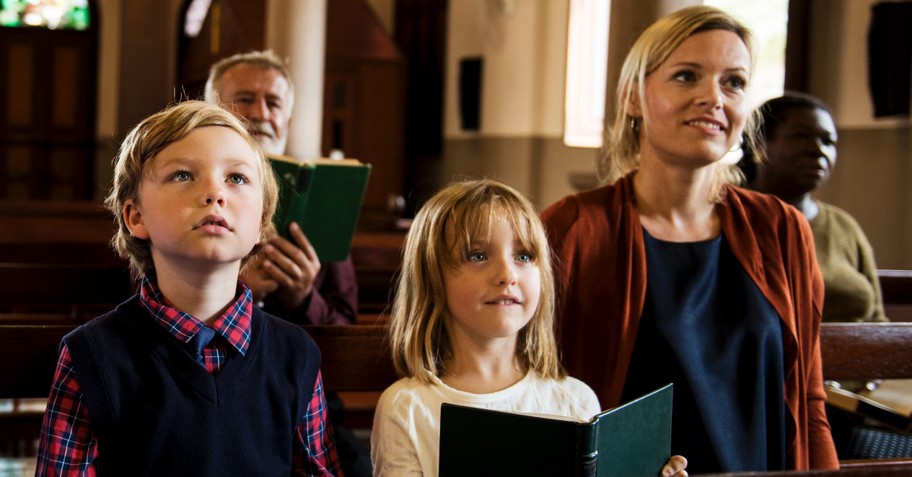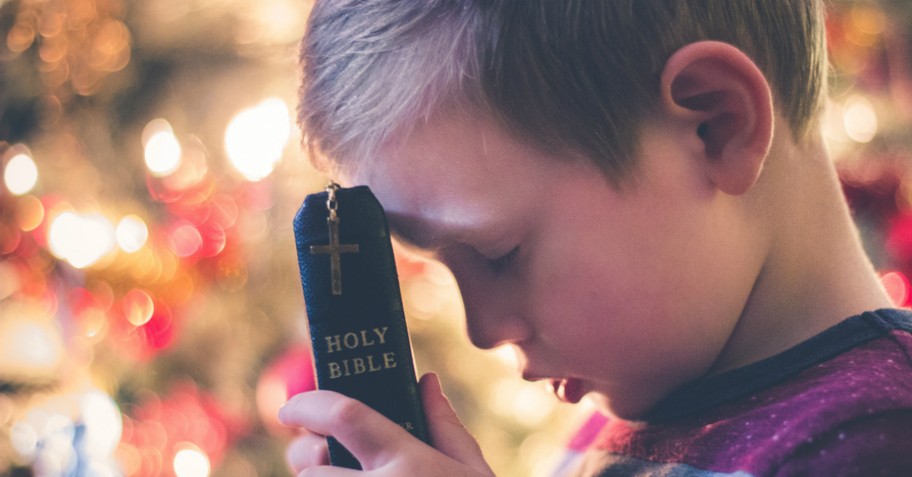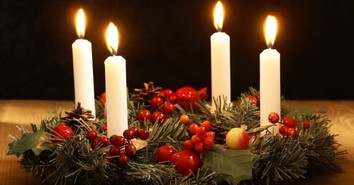Through prayer, we can ask God to prepare our hearts the way He prepared all of history to receive the gift of His Son. Ask the Father to use this time during Advent to cut away the distractions and make your life a place of warmth and openness. We've compiled these Advent prayers from across our archives to help you make sure there's "room at the inn" of your heart this year.
Advent Prayer #1
Lord, help us stop comparing our Advent season to any other family because we know you have ordained us for this family, at this table, and you have “good works prepared in advance for us to do” that are specific for us. We find meaning and joy in whatever life looks like because we trust Jesus for our lives. Even more, when we’re seated with Christ, we worship you and take our eyes off ourselves. Because we’re experiencing intimacy with Jesus, loneliness and disconnection fade and allow us to focus on blessing others.
We can stop obsessing over ourselves and consider how we might serve and love best. When we’re seated with Christ during Advent, we realize that you have sovereignly placed us right where we are for a reason this holiday season, and we can trust that you know what you’re doing. Finally, when we’re seated with Christ, we can reiterate to our heart that at all times, your peace, power, hope, and love are available to us in endless supply. As we take our seat with Jesus, we pray our holiday tables shimmer with your glory and that any joy and hope we’ve lost returns. May we overflow with spiritual gifts as we sit with you, Jesus.
~Edited from Heather Holleman's “The Greatest Seat at the Holiday Table”
Advent Prayer #2
Lord, how wrong I have been to act as if Christ had never been born. As if He didn’t perform miracles. As if He didn’t take my every tear, my daily worries, my sin and insecurities on that cross. As if the tomb wasn’t empty and the throne wasn’t full of His presence and grace. It’s that grace that gives meaning and power to your promises. I know that your Word prevails even when our world turns black. I trust that your healing comes in different forms, stages and ways.
I believe that you promised to provide all we need. Seeking you doesn’t require physical vision, complete health or a life free of troubles. But instead, a heart full of devotion and obedience, which I offer you. No matter how many Advent seasons sweep by, Lord, your reminders remain the same. Each tear we cry has a purpose. Each trying stage has a divine reason. And in your capable hands, each icy rain of adversity is transformed into the warmth and sparkle of your grace.
~Edited from Janet Perez Eckles' “3 Reasons to Dry Your Tears of Sadness at Christmas”
Advent Prayer #3
Lord, in a season when every heart should be happy and light, many of us are struggling with the heaviness of life—burdens that steal the joy right out of our stockings. Tragedy arrives as innocent victims suffer, and an inner voice whispers, “Be afraid!” We need your peace, Jesus. We confess that our hearts are too often filled with wonder of a different kind: wondering when the bills will be paid, when the terror will stop, when rest will come. Will it ever? Is the message still true? In a world where worry, not peace, prevails, stir up that good news again.
This Advent, make it real in our hearts. Never have we needed Your joy and peace more than now. Thank You for the gift of Jesus, our Immanuel, the Word made flesh. We not only need Your peace and joy; Lord, we crave it. You’ve promised rest for the weary, victory for the battle-scarred, peace for the anxious, and acceptance for the broken hearted - not just at Advent, but every day of every year. Your name is still called “Wonderful,” “Counselor,” “The Mighty God,” “The Everlasting Father,” and “The Prince of Peace.” We know that peace on earth can only come when hearts find peace with You. You are still our Joy. You are still our Peace. You are no longer a babe in the manger. You are Lord of lords and King of kings. And we still celebrate You as Lord—this Christmas and always.
~Edited from Rebecca Barlow Jordan's “A Prayer for Peace & Joy at Christmas”
Advent Prayer #4
This Christmas, Lord, come to the manger of my heart.
Fill me with Your presence from the very start.
As I prepare for the holidays and gifts to be given,
Remind me of the gift You gave when You sent Your Son from Heaven.
The first Christmas gift, it was the greatest gift ever.
You came as a baby born in a manger.
Wrapped like the gifts I find under my tree,
Waiting to be opened, to reveal Your love to me.
Restore to me the wonder that came with Jesus' birth,
when He left the riches of Heaven and wrapped Himself in rags of earth.
Immanuel, God with us, Your presence came that night.
And angels announced, "Into your darkness, God brings His Light."
"Do not be afraid," they said, to shepherds in the field.
Speak to my heart today, Lord, and help me to yield.
Make me like those shepherd boys, obedient to Your call.
Setting distractions and worries aside, to You I surrender them all.
Surround me with Your presence, Lord, I long to hear Your voice.
Clear my mind of countless concerns and all the holiday noise.
Slow me down this Christmas, let me not be in a rush.
In the midst of parties and planning, I want to feel Your hush.
This Christmas, Jesus, come to the manger of my heart.
Invade my soul like Bethlehem, bringing peace to every part.
Dwell within and around me, as I unwrap Your presence each day.
Keep me close to You, Lord. It's in Your wonderful Name I pray.
~Renee Swope, “The Manger of My Heart” from Proverbs 31 Ministries
















